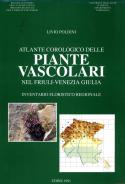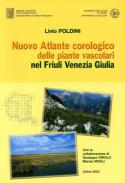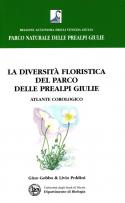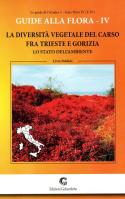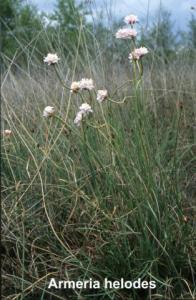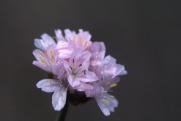- Home
- Department
- Research
- Teaching
- Post Graduate Studies
- Services and Equipment
- Knowledge Transfer
Phanerogamic herbarium
The phanerogamic herbarium is made up of material coming mainly from Italy, in particular from the south-eastern Alps and the karst area, as well as from the Mediterranean basin. There are also numerous samples of other provenance, especially from Europe, North America (Canada, United States), Japan, Canary Islands. Most of the specimens were collected by Livio Poldini, Sandro Pignatti and Duilio Lausi.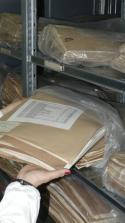

The phanerogamic herbarium was also enriched due to various inter-European exchanges within the "Echange des plantes vasculaires de l'Europe et du Bassin méditerranéen" program, coordinated by the Department of Botany of the University of Liège (1971 - 1994), as well as with the Department of Botany of the Faculty of Pharmacy of the University of Valencia (Spain) (1974 - 1985), with the Botanical Institute of the University of Lubljana (Slovenia) and through contacts with prof. Tone Wraber.
A separate collection consists of duplicates of part of the Flora exsiccata austro-hungarica (edited by Kerner, 1881-1888) and of the Flora exsiccata Carniolica (edited by Paulin, 1901-1907; edited by Dolšak, 1929, 1936; edited by Wraber, 1966) provided by prof. Ernest Mayer from the SAZU Academy of Ljubljana (SLO). Numerous samples were used for the "descriptio Florae Italiae" by Pignatti (1982).
There is also a rich collection of Genisteae, the subject of numerous systematic, chorological and palynological studies conducted by Laura Chiapella, Loredana Rizzi and their collaborators.
A safeguard archive is available in MS Access where the numbering of the sheets and the name of the species are currently reported.
Numerous data, especially of endemic species, rare and of critical groups reviewed by specialists, have been used for the drafting of the regional checklist (Poldini et al., 2001) and the setting up of the regional floristic database (Poldini, 1991, 2002), as well as of that of the Trieste and Isonzo Karst (Poldini, 2009) and of the Parco delle Prealpi Giulie (Gobbo & Poldini, 2005). The distribution data of the entities are shown in grid units (OGU's) corresponding to approx. 143 km2 for the regional one and approx. 9 km2 for the Karst and the Parco delle Prealpi Giulie.
Collaboration with the international project "Atlas Florae Europaeae" (Helsinki) has been active for years, in the context of which distribution data obtained from the herbarium and the floristic database are provided.
The data of the TSB herbarium have been used in various national projects such as:
- state of knowledge on the vascular flora of Italy (Poldini et al. 2005; Scoppola & Magrini, 2005)
- protected species at risk of extinction and red list at regional and national level (Conti et al., 1992, 1997; Scoppola & Spampinato, 2005)
- checklist of the native vascular flora of Italy (Conti et al., 2005, 2007; Bartolucci et al., 2018)
- checklist of exotic flora in Italy (Celesti-Grapow et al., 2009a, 2009b; Galasso et al., 2018)
- distribution and impacts of exotic species (Celesti-Grapow et al., 2010; Poldini et al., 2010)
There is also a small palynological collection, consisting of approx. 120 microscopic slides of acetolized pollen (with Corylus for comparison), included in glycerin gelatin, prepared at the Waldbau - Institut der Forstlichen Forschungsanstalt in Munich and donated to our Institution in November 1964 by Hannes Mayer (1922 - 2001).
In 1998 a manual for the schools was published to explain what an herbarium is and how it is set up. In 2001 a revised and extended version (Vidali & Genzo, 1998, 2001) was published by the Civic Botanical Garden of the Municipality of Trieste.
Holotypes
There are 25 samples conserved among holotypes (H), isotypes (I), lectotypes (L) and topotypes (T):
- Allium schoenoprasum L. subsp. orosiae J.M. Monts. (I)
- Armeria helodes F. Martini et Poldini (H)
 Astragalus vesicarius L. subsp. pastellianus (Pollini) Arcang. (T)
Astragalus vesicarius L. subsp. pastellianus (Pollini) Arcang. (T)- Bituminaria morisiana (Pignatti et Metlesics) Greuter (H)
- Brassica glabrescens Poldini (H)
- Centaurea jacea L. subsp. forojulensis (Poldini) Greuter (= C. forojulensis Poldini) (H)
- Daphne blagayana Freyer (I)
- Gentiana froelichii Jan ex Rchb. subsp. zenariae F. Martini et Poldini (H)
- Hieracium boreoistricum Gottschlich nom. nud. (= H. tesinense Evers) (H)
- Limonium lausianum Pignatti (L)
- Limonium mazarae Pignatti ex Brullo (L)
- Moehringia concarenae F. Fen. et F. Martini (I)
Pedicularis recutita L. var. trichocalycina Poldini (H)
- Pinguicula poldinii J. Steiger et Casper (H)
- Ptychotis sardoa Pignatti et Metlesics (H)
- Ranunculus aesontinus Pignatti (H)
- Ranunculus farraensis Dunkel et Poldini (L)
- Ranunculus gortanii Pignatti (H)
- Ranunculus palaeoeuganeus Pignatti (H)
- Ranunculus poldinii Dunkel (H)
- Ranunculus wraberi Pignatti (H)
- Ranunculus wraberi Pignatti var. integrifolius Dunkel (H)
- Salicornia veneta Pignatti et Lausi (H)
- Sedum montanum E.P.Perrier & Songeon subsp. orientale 't Hart (= S. thartii L.P. Hébert, Petrosedum thartii (L.P.Hébert) Niederle) (I)
- Veratrum x tonussii Poldini (= V. lobelianum Bernh. x V. nigrum L.) (H)
Almost all the holotypes of the Limonium genus described by Sandro Pignatti and officially deposited at the TSB Herbarium in the various publications, have been transferred at the request of the Author to the herbarium of the Department of Environmental Biology of the "La Sapienza" University of Rome.
Last update: 01-17-2019 - 15:35


